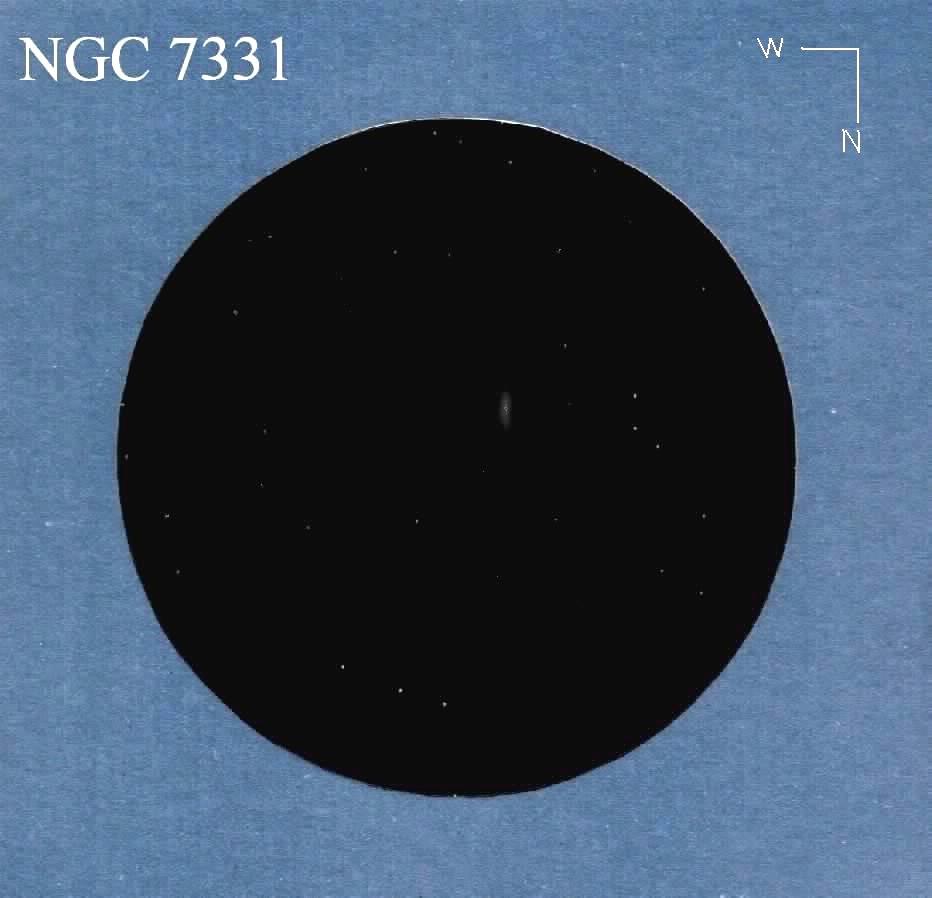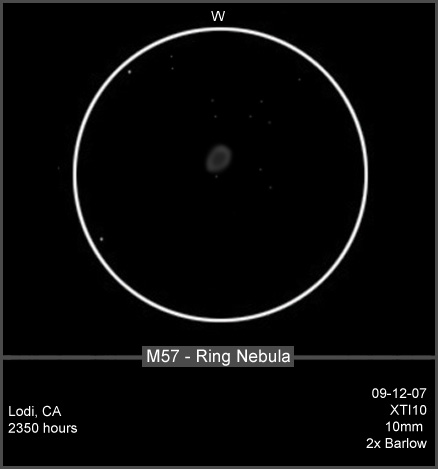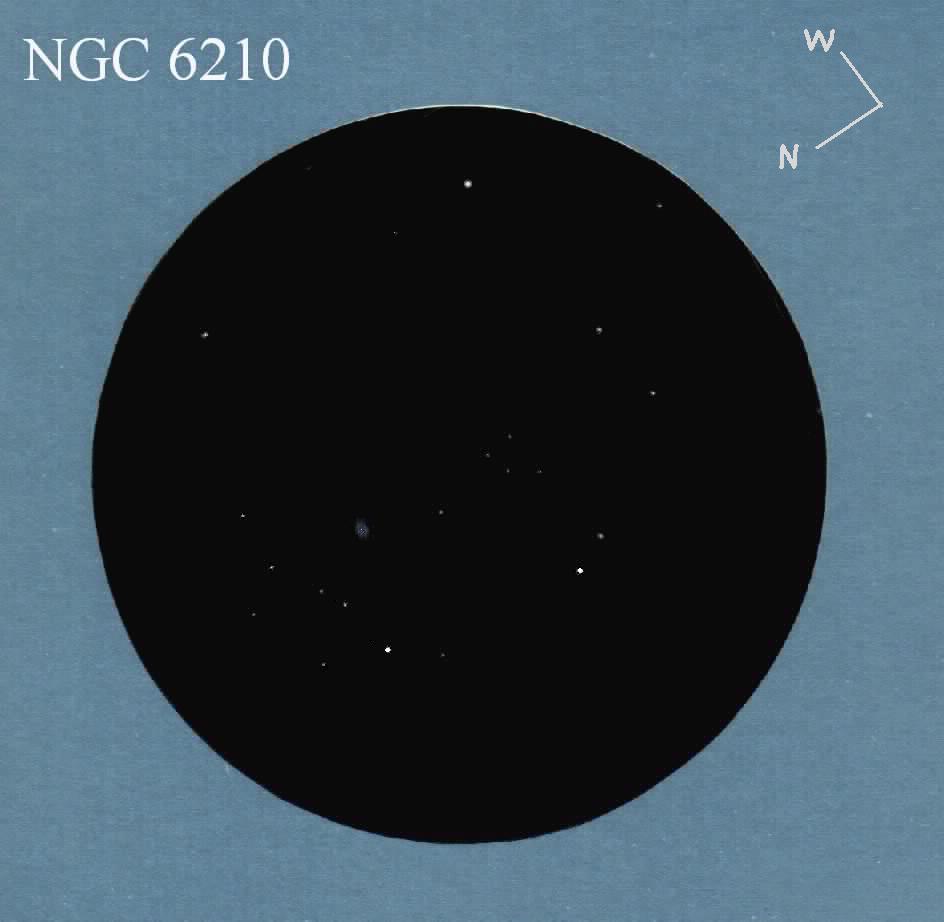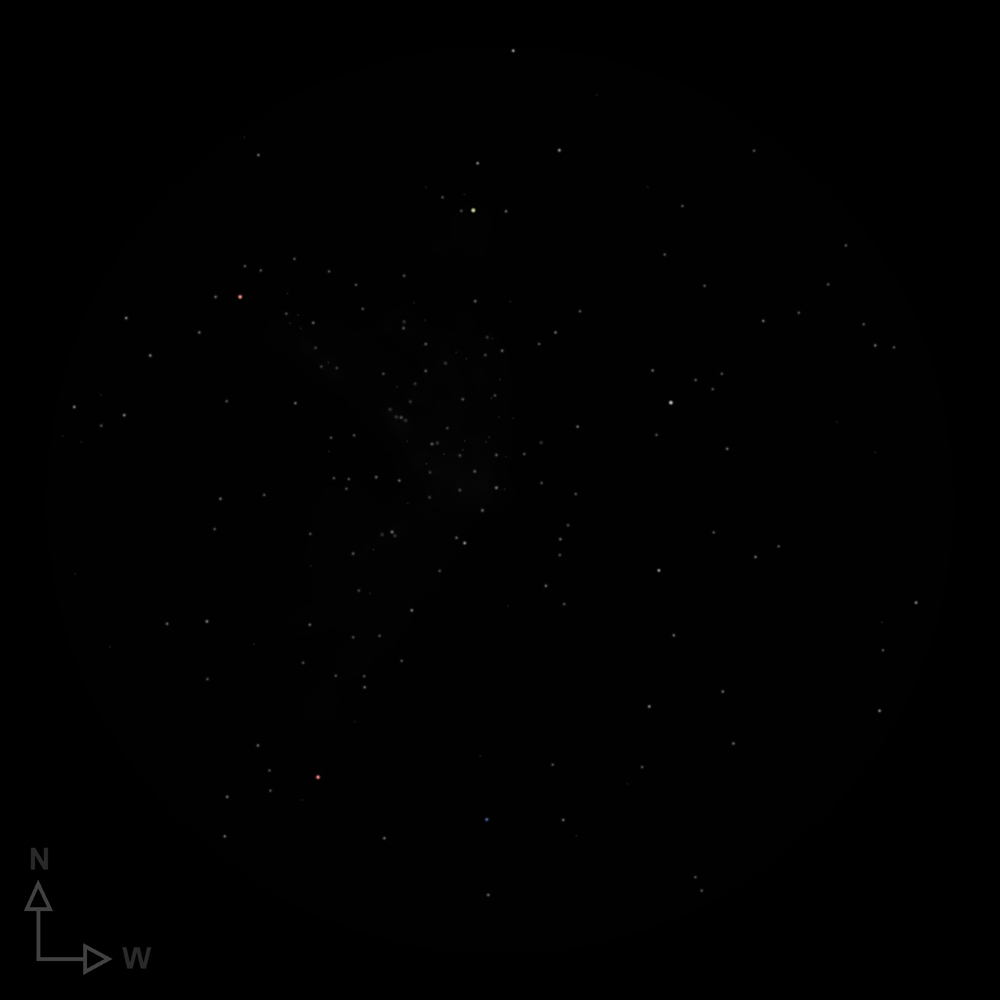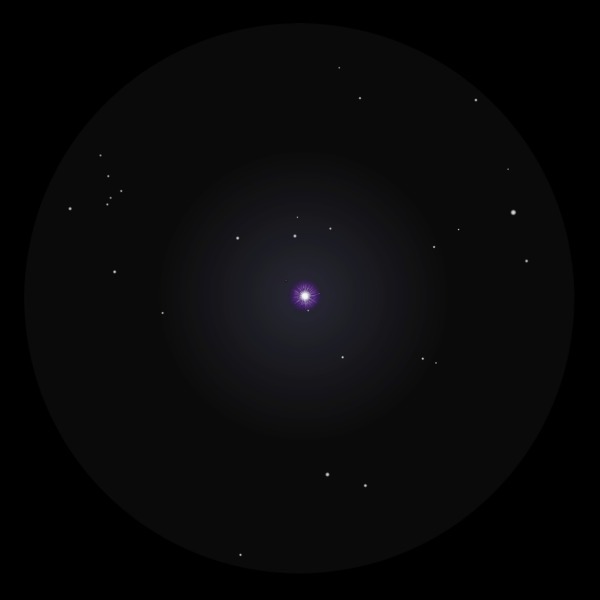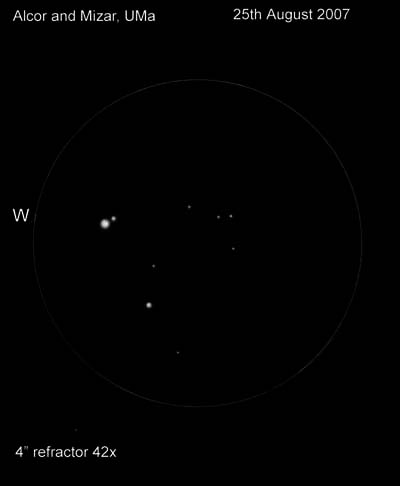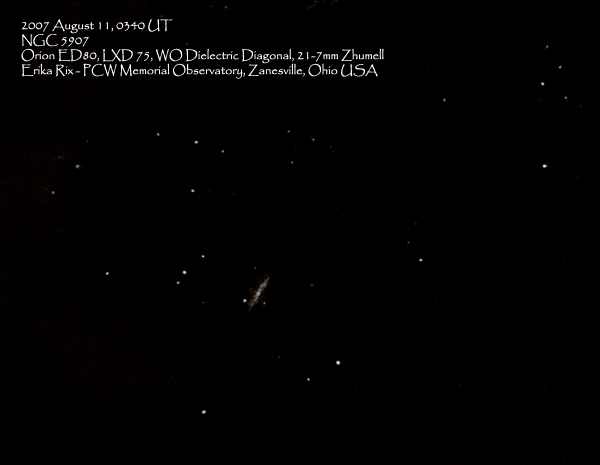
2007 Sept 01, 0450-0631 UT
10″ LX200 with diagonal, 21-7mm Zhumell
PCW Memorial Observatory, Erika Rix
Temp: 57.9 °F / 14.4 °C
Humidity: 75%
Seeing Antoniadi II, Transparency 2/6
Sketch media: Rite in the Rain paper, charcoal
Moretus
Lunation 19.24 d
81.4% Illumination
Lib. Lat: -04deg44′
Lib. Long: +01deg35′
Altitude 35deg
Colongitude 139.9deg
According to the Virtual Moon Atlas the dimension of Moretus is 117x117Km / 69x69Mi
and it’s from the Eratosthenian period (From -3.2 billions years to -1.1 billions
years).
I’m having fun with Moretus. Chuck Wood wrote “Moretus is a very fresh but rayless
115-km-wide, 4-km-deep version of Tycho that would be a major attraction if it were
better placed.” (page 126, The Modern Moon, a Personal View). He also brought up
Harold Hill and the measurement of the central peak of Moretus that Mr. Hill wrote
as being the highest of all the craters Earthside at 2.12km. Chuck then measured it
using Lunar Orbiter photos and found it to be very comparable to Mr. Hill’s at
2.66km.
This led me look for Moretus in Harold Hill’s “A Portfolio of Lunar Drawings” and on
pages 122-123 I found not only a superb description of this crater, but two sketches
that were very similar in comparison to each other as my two sketches’ were to each
other. The purpose of this report was to compare my sketch of 2007 September 01 to
that of 2006 October 30. I was pleasantly surprised to be led to the same type of
report from Mr. Hill…”two 1966 drawings demonstrate how greatly the presentation
of this magnificent formation can alter under near extremes of libration in
latitude.”(page 122)
Here is the sketch from Oct 2006:
http://www.cloudynights.com/photopost/showphoto.php?photo=8052&password=&sort=2&thecat=500
The details for comparison are:
Lunation 7.8d
51.4% Illumination
Lib. Lat: +05deg39′
Lib. Long: -06deg08′
Altitude 26deg
Colongitude 7.4deg
Note in the earlier sketch that not only does Moretus look narrower, but Cysatus and
Curtius are completely hidden and Gruemberger looks completely invisible except for
the telltale crater within it, Gruemberger A.
Now look at the Moretus sketch from the other day. Everything has opened up,
Moretus, Short on the other side as well as the three craters on the Northern
borders (to the bottom in both sketches).
It’s easy to see how a person could get lost in the rugged terrain of the Southern
hemisphere and even more so, how difficult it would be to make accurate studies. An
example of this is the measurement of the central peak. I’ll make no claims that I
could begin to measure the central peak myself. But I thought I could see a
craterlet in my observation the night just plain as day on the southern rim of
Moretus towards Short. In the sketch, you can even see the craterlet. My
observation from Oct of 2006 does not include this. I began to doubt myself on
whether this feature was actually there. Thank goodness for Hill’s observation. He
confirmed this depression in the rim with his sketch done on 1966 Dec 4th, with a
higher percentage of illumination than his second sketch.
We already knew that repeated observations are necessary during our studies of the
Moon. These two observations as well as the two that Mr. Hill did in 1966 are
perfect examples why.

